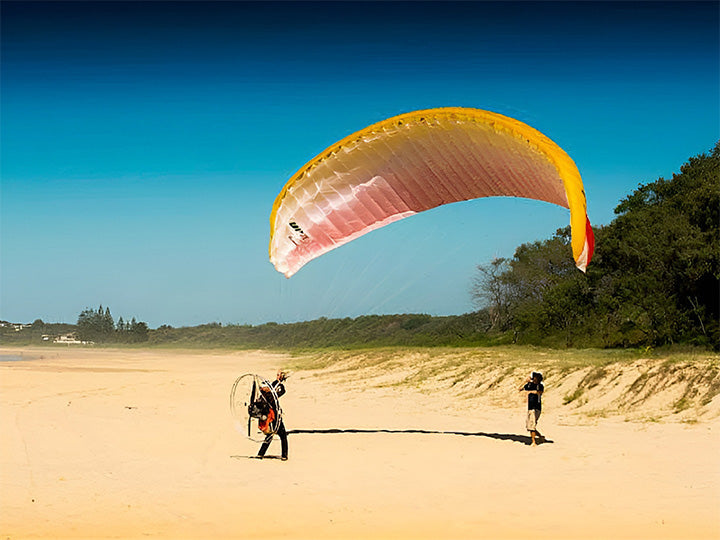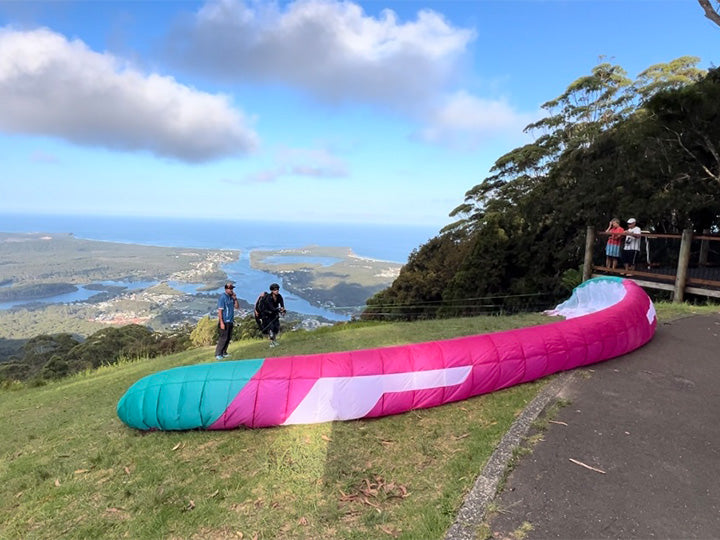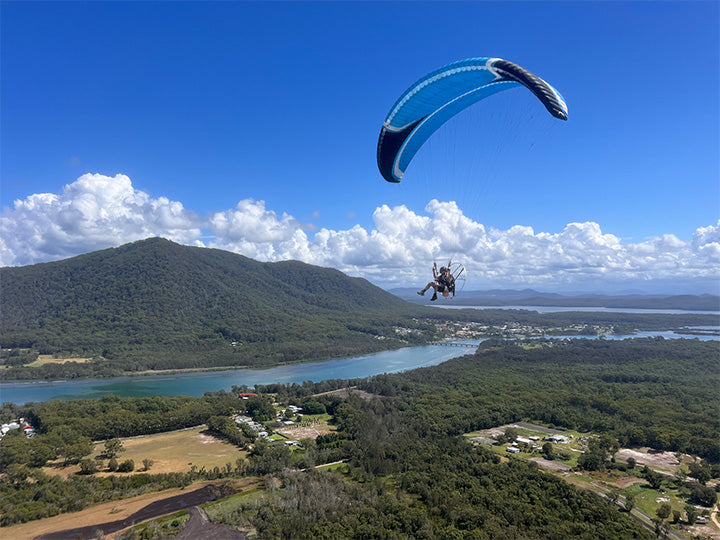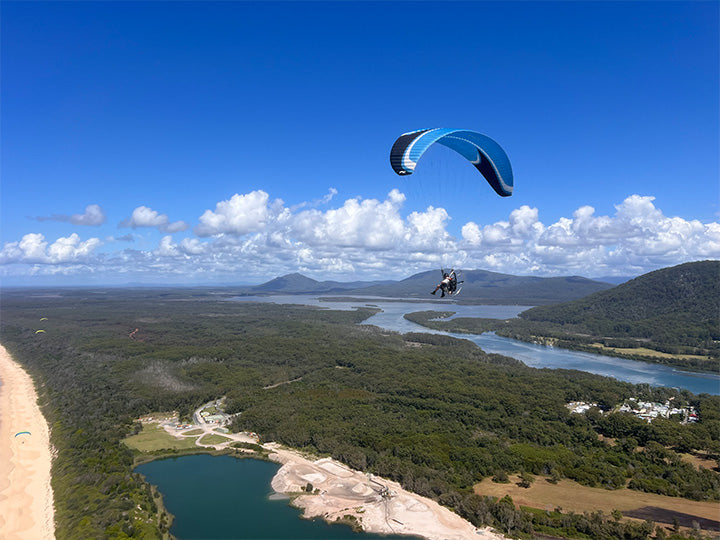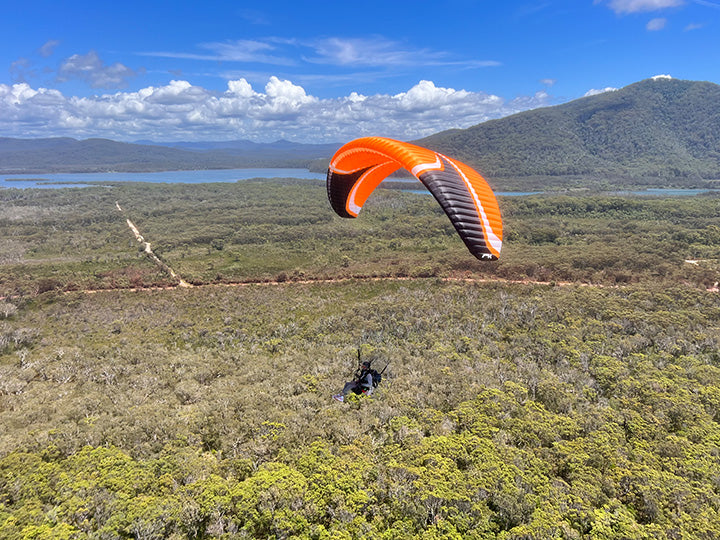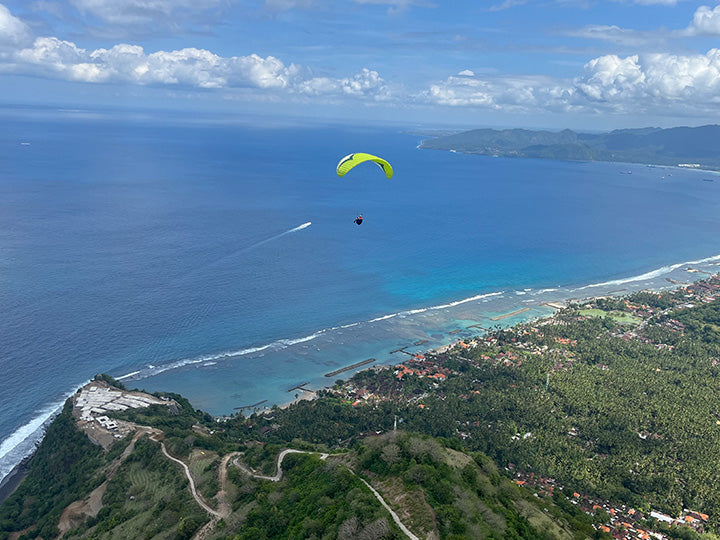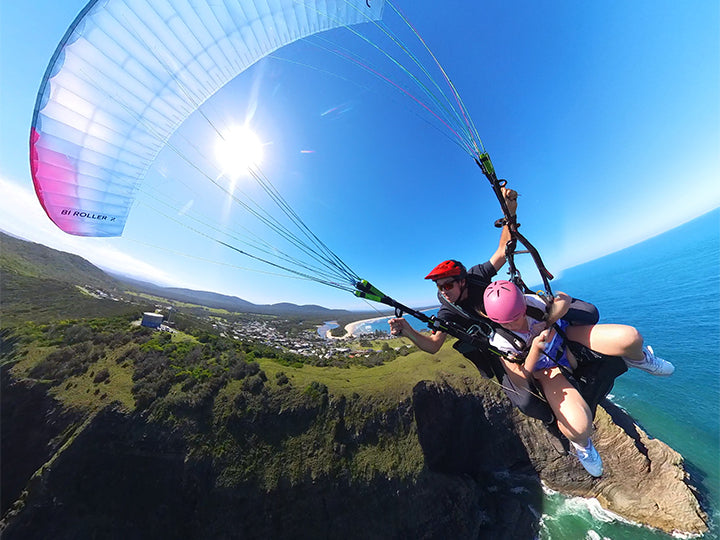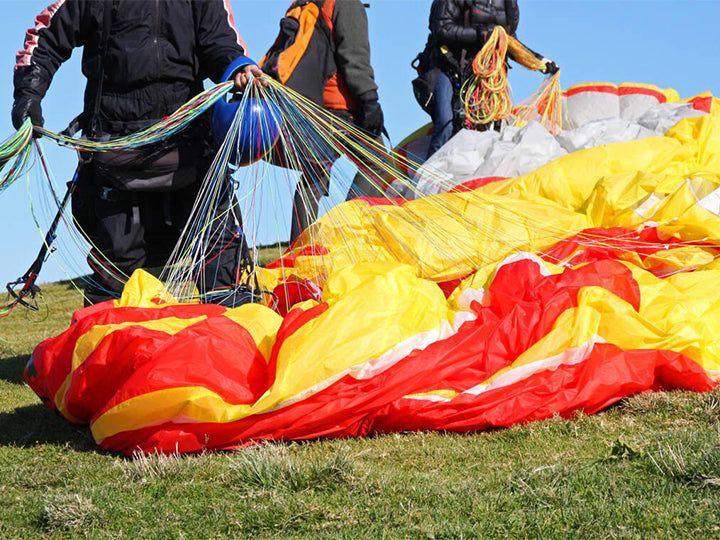What Is The Difference Between Parasailing And Paragliding?
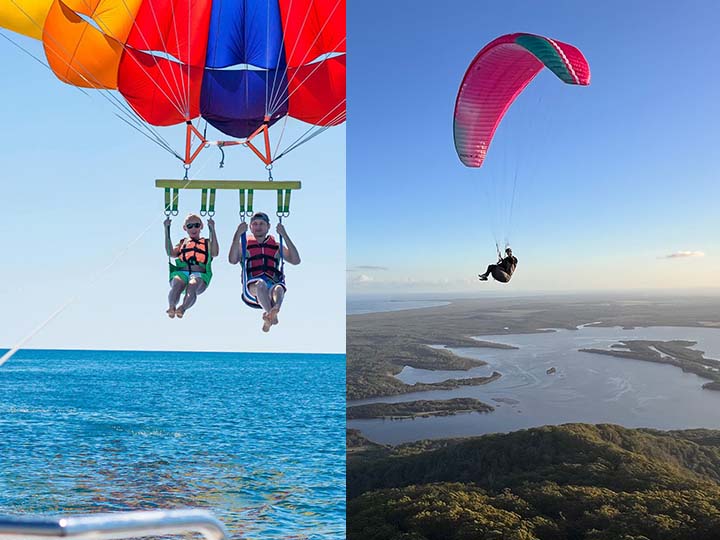
When it comes to aerial sports, many enthusiasts often confuse paragliding with parasailing. Although both provide a bird's eye view of the world below, they cater to different experiences and thrills. If you're considering taking to the skies but can't decide which activity suits you best, this blog sets out the key differences between paragliding vs parasailing.
The Basics of Paragliding and Parasailing
What is Paragliding?
Paragliding is a recreational and competitive flying sport. A paraglider is a free-flying, foot-launched aircraft where the pilot sits in a harness suspended below a fabric wing comprising many interconnected baffled cells. Pilots take off from hills or mountains and ride thermal currents or along ridge lines to soar through the sky, offering an exhilarating sense of freedom.
What is Parasailing?
On the other hand, parasailing involves a person being towed behind a boat while attached to a specially designed parachute, known as a parasail. The boat then drives off, carrying the participant into the air. Parasailing is more controlled and can be considered a recreational activity rather than a sport, offering breath-taking views of the surrounding landscape without piloting skills.
Key Differences
Training and Instruction
- Paragliding requires more extensive training and an understanding of aerodynamics, as pilots control their direction and altitude.
- Parasailing participants need minimal instruction, as the boat's driver controls the flight.
Experience and Control
- Paragliding offers a more hands-on flying experience, with pilots deciding their flight path.
- Parasailing is more passive, ideal for those who wish to experience being airborne without the responsibility of controlling the flight.
Safety and Risks
- Both sports have inherent risks, but paragliding requires a higher level of skill and awareness to manage safety.
Locations and Views
- Paragliding is often done from in-land mountains or coastal sites, offering diverse landscapes.
- Parasailing is typically offered in coastal areas, providing stunning sea views.
The Thrill Factor in Paragliding vs. Parasailing
Adrenaline Rush in Paragliding
Paragliding is a pure adrenaline rush for those who seek the ultimate freedom of solo flight. The thrill of taking off from a mountain peak and soaring with the birds is unmatched. Pilots experience the raw elements of nature as they navigate through the air, making real-time decisions based on wind patterns and thermal currents. The sense of accomplishment after a successful flight is profound, making it a top choice for adventure seekers.
Relaxed Excitement of Parasailing
Parasailing offers a different kind of thrill — the excitement of being lifted into the air and floating above the water. It's a more relaxed experience, perfect for those who want to enjoy the sensation of flight without the intensity of paragliding. The panoramic views of the ocean and coastline are breath-taking, providing a serene form of adrenaline that's hard to find elsewhere.
Equipment and Gear: What You Need
Paragliding Gear
- Wing: The paraglider wing or canopy is the most critical piece of equipment.
- Harness: A comfortable seat that attaches you to the wing.
- Helmet: Safety first — a helmet is essential for protection.
- Reserve Parachute: An important safety measure in case of emergency.
Parasailing Equipment
- Parasail: The specially designed parachute that lifts you into the air.
- Harness: Attaches you securely to the parasail.
- Tow Rope: Connects the parasail to the boat.
Choosing the Right Adventure
Consider your thrill level, willingness to learn, and the type of views you wish to experience. Paragliding suits those looking for an adrenaline rush and a hands-on flying experience. Parasailing is perfect for a more relaxed, scenic view from above, with less need for extensive training.
Are you ready to embrace the skies? Paragliding offers an unrivalled sense of freedom and thrill that's hard to beat. Contact High Adventure for the ultimate experience.
Frequently Asked Questions
Is paragliding or parasailing safer?
Each has its safety considerations, but parasailing typically involves less training and is more controlled by the boat driver.
Can I paraglide or parasail without any experience?
Yes, for parasailing. For paragliding, you can do a tandem paragliding flight with no experience, but training is necessary to become a solo paragliding pilot.
How high do you go when paragliding vs parasailing?
Paragliding can reach heights of up to 15,000 feet, while parasailing is generally limited to about 500 feet.
What is more expensive, paragliding or parasailing?
Paragliding often has higher initial costs due to training and equipment.


